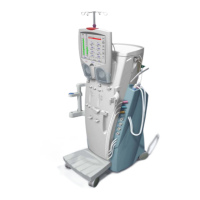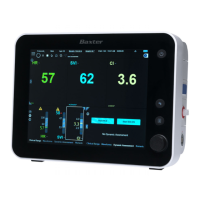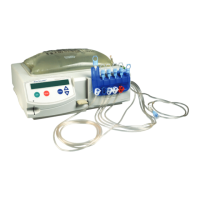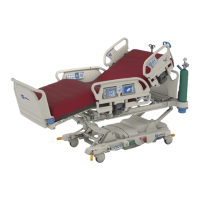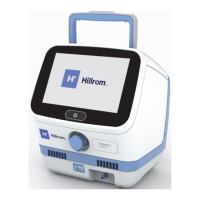Use
7990087_030_03 – 2080492 – 2023-01-19 39
Risk due to blue light
The blue light (400 nm to 780 nm) of the LEDs can fatigue the eyes
or damage the retinas. The maximum radiation duration in the
working range from 80 cm to 130 cm (31.50 inch to 51.18 inch) is
73 seconds.
• Do not look for a prolonged time into the switched-on light field
of the surgical light.
Risk due to high lighting intensity
A high light intensity can cause burns in the wound area of the
patient, dry out tissue (especially during long exposure times and
reduced perfusion), and damage the eyes. The light intensity is
high if light fields overlap or if there is direct contact with the
emitted light.
• Position the light head so that the light fields do not overlap.
• Reduce the light intensity of the individual light heads.
• Do not look directly into the light field or surgical light.
• Close or protect the patient's eyes during surgery. For example
with protective glasses with an optical density of at least 2, or
that are designed according to protection level 6 EN 169.
• For patients with a thin or sensitive skin, for example with
children, use additional skin protection.
Risk due to reduced light intensity
• If more than 10 LEDs fail on one light head, take the surgical
light out of service and notify the Technical Customer Service.
Risk of interference
• In the event of interference between the surgical light and
other devices, switch off the automatic shadow management
and contact the manufacturer of the affected device.
Support arm system:
Danger due to overloading
Overloading the support arm system can result in severe
malfunctions and the support arms, individual components or
accessories may come loose from their mountings and crash.
• The maximum load capacities, specified in the technical data of
the support arms, may not be exceeded. Observe the
instructions for use with the document number 7990089.
• Only components and accessories authorized by Baxter may
be used on the support arm system.
Danger due to uncontrolled movement on the support arm
system
• Before MRI use, swivel the support arms, components and
accessories away from the danger area of the strong magnetic
field.
• If the spring arm moves upwards or downwards of its own
accord, the spring force must be readjusted by trained
personnel.
• If the surgical light or camera does not remain securely in the
set position after a turning movement, the braking force must
be readjusted by trained staff.

